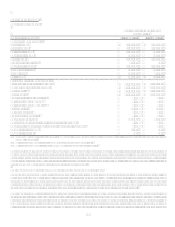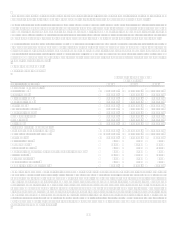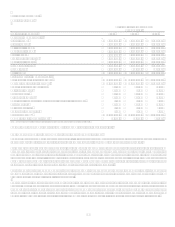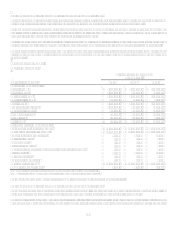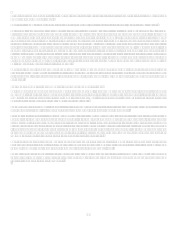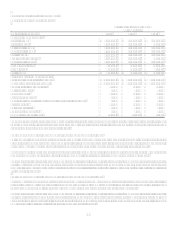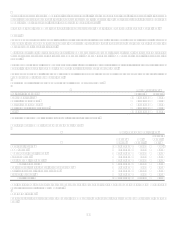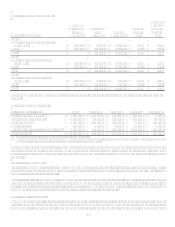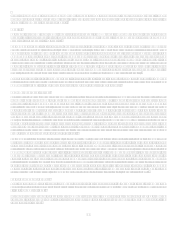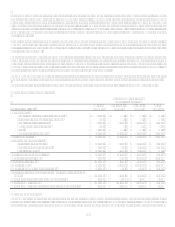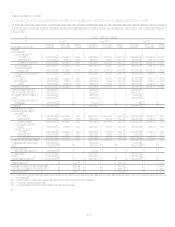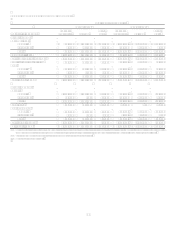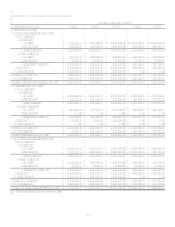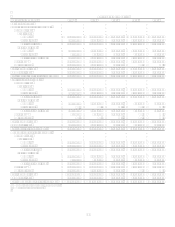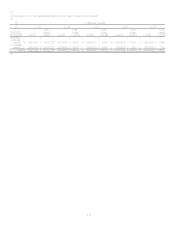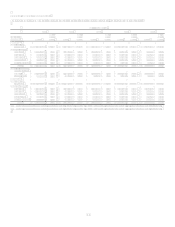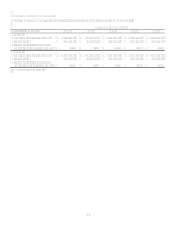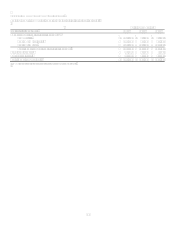Capital One 2007 Annual Report Download - page 71
Download and view the complete annual report
Please find page 71 of the 2007 Capital One annual report below. You can navigate through the pages in the report by either clicking on the pages listed below, or by using the keyword search tool below to find specific information within the annual report.49
Other Borrowings
Subsidiary banks are members of various Federal Home Loan Banks (FHLB) that provide a source of funding through advances.
These advances carry maturities from one month to 30 years. At December 31, 2007, the Company had $6.8 billion of advances from
the FHLBs. All FHLB borrowings are collateralized with mortgage-related assets which may include residential and commercial
mortgages and home equity loans.
The Corporation entered into a replacement capital covenant for the benefit of persons that buy, hold or sell a specified series of long-
term indebtedness of the Corporation or certain of its depositary institution subsidiaries. The Company will provide a copy of the
replacement capital covenant to holders of the covered debt upon request made to Investor Relations.
The replacement capital covenants provide that the Corporation will not repay, redeem or purchase, and will cause its subsidiaries not
to repay, redeem or purchase, all or any part of the relevant junior subordinated debentures prior to a defined termination date except,
with certain limited exceptions, to the extent that, during the 180 days prior to the date of that repayment, redemption or purchase, the
Corporation or its subsidiaries have received proceeds from the sale of qualifying securities that (i) have equity-like characteristics that
are the same as, or more equity-like than, the applicable characteristics of the relevant junior subordinated debt securities at the time of
redemption or repurchase, and (ii) the Corporation has obtained prior approval of the Federal Reserve Board, if such approval is then
required by the Federal Reserve Board.
As of December 31, 2007, the Corporation had junior subordinated debentures and senior subordinated notes totaling $1.6 billion
whose holders are entitled to the benefits of the replacement capital covenants.
Derivative Instruments
The Company enters into interest rate swap agreements in order to manage interest rate exposure. In most cases, this exposure is
related to the funding of fixed rate assets with floating rate obligations, including off-balance sheet securitizations. The Company also
enters into forward foreign currency exchange contracts to reduce sensitivity to changing foreign currency exchange rates. The
hedging of foreign currency exchange rates is limited to certain intercompany obligations related to international operations. These
derivatives expose the Company to certain credit risks. The Company has established policies and limits, as well as collateral
agreements, to manage credit risk related to derivative instruments.
In April 2006, the Company entered into derivative instruments to mitigate certain exposures it faced as a result of the expected
acquisition of North Fork. The position was designed to protect the Companys tangible capital ratios from falling below a desired
level. The Companys maximum negative exposure was expected to be no more than approximately $50 million. The derivative
instruments expired out of the money and unexercised on October 2, 2006.
Additional information regarding derivative instruments can be found in Item 8 Financial Statements and Supplementary Data
Notes to the Consolidated Financial StatementsNote 25.
IX. Market Risk Management
Interest Rate Risk
The management of interest rate risk, or the risk that earnings will be diminished by changes in interest rates, is fundamental for
banking institutions. Like other banks, the Company borrows money from other institutions and depositors, which it uses to make
loans to customers and invest in debt securities and other earning assets. The Company earns interest on these loans and assets and
pays interest on the money it borrows from institutions and depositors. If the rate of interest it pays on its borrowings and deposits
increases more than the rate of interest it earns on its assets, the Companys net interest income, and therefore its earnings, will be
diminished. The Companys earnings could also be negatively impacted if the interest rates it charges on its earning assets fall more
quickly than the rates it pays on its borrowings and deposits. Changes in interest rates and competitor responses to those changes may
affect the rate of customer pre-payments for mortgages and auto and installment loans and may affect the balances customers carry on
their credit cards. These changes can reduce the overall yield on its earning asset portfolio. Changes in interest rates and competitor
responses to these changes may also impact customer decisions to maintain balances in the deposit accounts they have with the
Company. These changes may require the Company to replace withdrawn balances with higher cost alternative sources of funding.
In addition to the impact to current earnings, interest rate risk also refers to changes in the net present value of assets and off-balance
sheet positions less liabilities (termed economic value of equity) due to interest rate changes. Economic value of equity could be
affected to the extent that the market value of the Companys assets, liabilities and off-balance sheet positions do not respond equally
to changes in interest rates.
The Companys measurement of interest rate risk considers both earnings and market value exposures. The consolidated balance sheet
and all off-balance sheet positions are included in the analysis. The analysis reflects known balances and contractual maturities when
available. Balance sheet positions lacking contractual maturities and those with a likelihood of maturity prior to their contractual term


